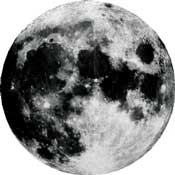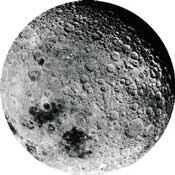|
|
|
|
|
|
|
|

|
|||||||
 |
| Motion | Pages 42-43 | See Linked Version | |
| |
|
spins beneath the Moon. The Sun also raises tides on Earth but only about half as effectively because it is much farther away. The large distance leads to a relatively small difference in the Sun's gravitational force between one side of Earth and the other. Billions of years of tidal pulls between Earth and the Moon have altered their orbits and rotations. Tidal friction within the Moon, part of which was molten early in its history, slowed its spin significantly. Today, it rotates just once each time it circles Earth. We call that phenomenon "tidal lock." It's the reason that we see the same face of the Moon each night. The Moon slows Earth's spin as well but much more gradually because of Earth's larger angular momentum. Still, a day on Earth was much shorter in the past. For instance, growth rings in fossilized corals indicate that 400 million years ago each day was just 22 hours long. The length of our days now increases at the rate of 16 seconds per million years, still not enough extra time for us to get everything done. The same tidal forces happen with more dramatic results around Jupiter. The moon Io, the closest of Jupiter's Galilean satellites, is the most tidally tortured object in the solar system. The combined gravitational pulls of Jupiter's other major moons--primarily Europa, the next nearest--tug Io to and fro in its otherwise circular orbit. Massive Jupiter thus inflicts powerful and ever-changing tidal stresses on Io. This churns the moon's interior and melts it, just as you could liquefy a bag of ice (continued)   Tidal Lock Earth's much greater gravitational pull has slowed the Moon's axial rotation so that it now spins once in the same amount of time it takes to complete one orbit of Earth: 27.32 Earth days. Thus we always see the same side of the Moon (left), with its dark maria, or plains of ancient lava flows. The less familiar far side (right), photographed by astronauts and space probes, shows the cratered history of meteoritic bombardment. |